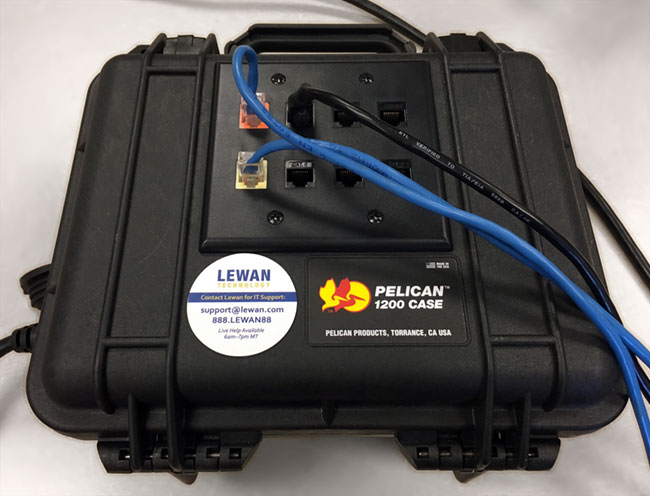As we move more and more clients to the cloud, we want to help them do so with little or no surprises along the way. To facilitate this, we developed a Cloud Optimization & Readiness Assessment to roadmap a strategy that ensures success through evaluating and engaging people, process and technology as part of the overall plan.
But our Professional Services team wasn't satisfied stopping there. To take it a step further, as part of a team "hackathon" challenge, a group of our engineers developed an additional cloud readiness tool to test latency:
Meet the Lewan "Superflux Capacitor"

It might not be much to look at, but what it does is pretty cool. It's a cloud inducer to test client applications that normally talk to servers over the LAN by injecting a simulated WAN/internet into the data path.
Why did we call it the Superflux Capacitor? This device has nothing to do with capacitance or superflux (whatever that even is!) but it's name is an ode to Back to the Future. We think it's an invention even Doc would be proud of!
How It Works
What we do is place this latency inducer onsite as part of our Cloud Optimization & Readiness Assessment. Then we can connect one or more (up to 6) customer workstations and introduce latency, packet loss and bandwidth limits to simulate a WAN/internet connection between the client PCs and the cloud servers.
Simulation results with no latency or bandwidth limits:

Simulation results with 50 ms of latency and some bandwidth limits:

We then measure the performance of the business critical applications and interview the users for real or percieved slowness before and after the testing. From this we can better determine if an advanced form of application delivery may be needed for certain applications.
The Superflux has a Rasberry Pi inside with a small switch and software on the Pi that is tunable via a GUI accessible through the management port.
Check Out the Superflux v0.1 in Action:
 to see if leveraging the cloud is the right move to make your business more agile and/or OPEX driven. We have have the cloud services methodology and tools (including the Superflux!) to help you better understand your roadmap.
to see if leveraging the cloud is the right move to make your business more agile and/or OPEX driven. We have have the cloud services methodology and tools (including the Superflux!) to help you better understand your roadmap.
Or maybe you're already in the cloud, and you're unsure if your cloud strategy is paying off as planned? Or are you struggling with what to do next?  to assess your current cloud investment and readiness to move critical technologies into the cloud using Lewan’s tool-based performance analysis and interviews with key stakeholders. Then leverage our managed cloud services to optimize and manage your cloud infrastructure.
to assess your current cloud investment and readiness to move critical technologies into the cloud using Lewan’s tool-based performance analysis and interviews with key stakeholders. Then leverage our managed cloud services to optimize and manage your cloud infrastructure.


 Why did we call it the Superflux Capacitor? This device has nothing to do with capacitance or superflux (whatever that even is!) but it's name is an ode to
Why did we call it the Superflux Capacitor? This device has nothing to do with capacitance or superflux (whatever that even is!) but it's name is an ode to 
